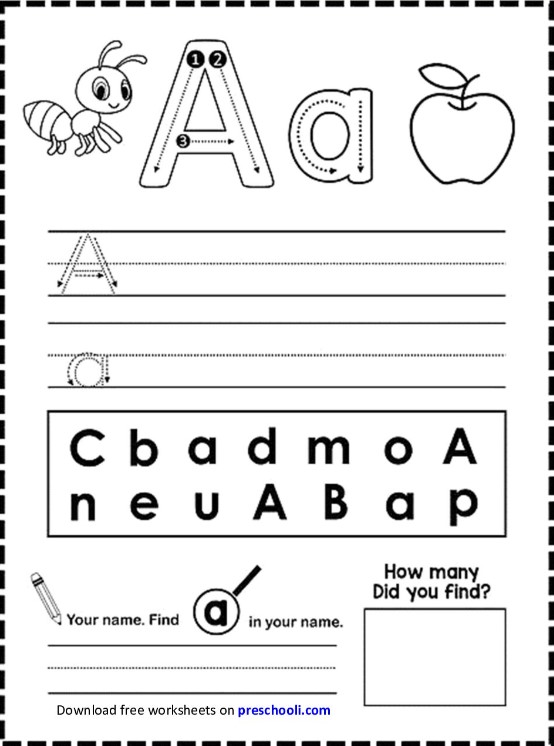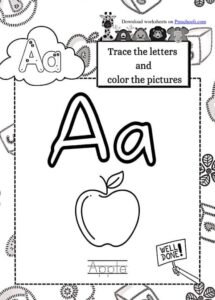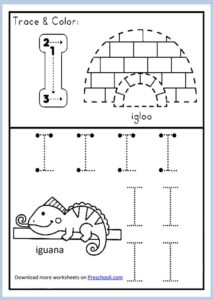All You Need to Know About ABC Worksheets for Kindergarten: A Comprehensive Guide
The first step in a child’s journey of learning the English alphabet is an essential milestone in their educational roadmap. It’s no secret that mastering the ABCs is foundational to not only reading and writing but the entire educational experience. Whether you’re a parent, an educator, or a homeschooling enthusiast, the value of a well-structured ABC worksheet cannot be overstated. In this guide, we’ll unravel the importance and utility of ABC worksheets tailored for the inquisitive minds of kindergarteners.
The Educational Role of ABC Worksheets in Kindergarten
Kindergarten is where young minds lay the cornerstone of their literacy skills. ABC worksheets serve a crucial role in consolidating these primary skills. They are designed to be fun, colorful, and engaging, aiming to instill a love for learning the alphabet. Through various exercises and activities, these worksheets help children recognize, write, and express familiarity with the 26 letters of the English alphabet.
Developing Fine Motor Skills
The act of tracing and writing the alphabet with a pencil is a milestone in fine motor skill development. By encouraging children to follow the lines, they improve hand-eye coordination and prepare their little hands for future writing assignments.
Enhancing Language and Cognitive Development
As children interact with the worksheets, they recognize the appearance of each letter, its sound, and the specific motor sequence required to form it. This interaction stimulates cognitive development and lays the groundwork for language proficiency.
Sparking Creativity and Confidence
The repetitive nature of worksheet activities creates a sense of mastery, which is a confidence booster. This, in turn, cultivates a positive attitude toward learning and instills creativity as they fill in the letters and related images with colors or representative items.
Types of ABC Worksheets
There isn’t a one-size-fits-all formula for designing ABC worksheets. Each worksheet type caters to a specific aspect of learning the alphabet. Here are a few types designed to cover various areas of understanding:
Tracing Sheets
Tracing worksheets provide guided practice for writing each letter. They often feature dashed lines for children to trace, followed by a blank space for them to independently form the letter.
Matching Worksheets
Matching worksheets can involve matching uppercase and lowercase letters, matching letters with their initial sounds, or even associating letters with corresponding images that have the same beginning letter.
Coloring and Activity Sheets
Coloring worksheets include an outline of the letter and accompanying image for children to color, reinforcing the shape and sound of each letter in a playful manner. Additional activities like mazes and puzzles make learning more interactive.
How to Make ABC Worksheets Effective and Enjoyable
The success of an ABC worksheet lies in its effectiveness in teaching, and its enjoyability to keep children engaged. Here’s how to ensure your worksheets hit the mark:
Interactive Elements
Add elements that encourage children to interact with the page by using stickers, stamps, or even highlighting the correct answers. This adds a tactile dimension to the learning experience.
Variety in Design
Incorporate a variety of designs to keep the worksheets interesting. Use different fonts, styles of letters, and images to cater to different preferences and learning styles.
Progression and Reinforcement
Design a series of worksheets that gradually introduce new letters and reinforce previously learned ones. Repetition is key, but it should also lead to progression in the learning journey.
Harnessing the Power of Worksheets in Kindergarten Literacy
Before we dive into individual worksheet examples, let’s first understand the role these tools play in enhancing the literacy journey for young learners. When used thoughtfully, worksheets can:
- Reinforce letter recognition and formation
- Introduce phonics and the sounds of letters and words
- Encourage literacy through coloring, drawing, and creative exercises
- Foster fine motor skills essential for writing
- Promote independence by allowing students to work at their own pace
- Be a versatile tool for differentiating instruction
Remember, the key to harnessing this power is to use worksheets as part of a diverse range of teaching methods, not as a one-size-fits-all substitute for hands-on learning.
Integrating ABC Worksheets in the Kindergarten Curriculum
ABC worksheets are most effective when they complement a comprehensive curriculum. They should reinforce classroom instruction and provide additional practice. Here’s how they can be integrated:
Daily or Weekly Practice
Assign worksheets as homework for consistent reinforcement of in-class learning. A daily or weekly routine helps keep the material fresh in children’s minds.
Individual and Group Work.
Worksheets can be used by children individually as well as in group settings. This allows for tailored support as well as collaborative learning.
Contextualization
Use worksheets that immerse ABC concepts into real-life contexts. For instance, you could have a themed worksheet for each week, focusing on occupations or animals, where the letters are used within context.
Assessing Progress with ABC Worksheets
A well-designed ABC worksheet can be an excellent tool for assessment. It provides tangible evidence of a child’s progress and a benchmark for further growth. Some practices include:
Anecdotal Records
Keep a record of children’s interaction with worksheets, noting their strengths and areas for improvement. Anecdotal records can be valuable in identifying trends over time.
Portfolios
Create portfolios with samples of worksheets completed by children throughout the year. These can be reviewed during parent-teacher conferences to discuss growth and next steps.
Observe Completion
Often, how a child approaches a worksheet can be just as telling as the answers they provide. Keep an eye out for the process and strategies children use when completing their work.
Conclusion: ABC Worksheets kindergarten as Essential Learning Tools
ABC worksheets are not just about learning the order of 26 letters; they signify the beginning of a child’s academic journey. When thoughtfully designed and integrated, they provide a solid alphabet foundation and offer a multitude of educational benefits. Whether it’s about honing writing skills, developing language competence, or fostering a lifelong love for letters, ABC worksheets are more than sheets of paper—they are the stepping stones to a world of literacy
Ready to take the plunge and incorporate ABC worksheets into your child’s routine? Explore our collection of free, printable worksheets designed to make learning the ABCs a delightful adventure!
Now that you’re equipped with the knowledge and strategies to make the most of ABC worksheets, it’s time to take action and witness the transformation in your child’s learning. Download our free ABC worksheets to jump-start a joyful and engaging alphabet learning journey.
Join our Facebook Group



